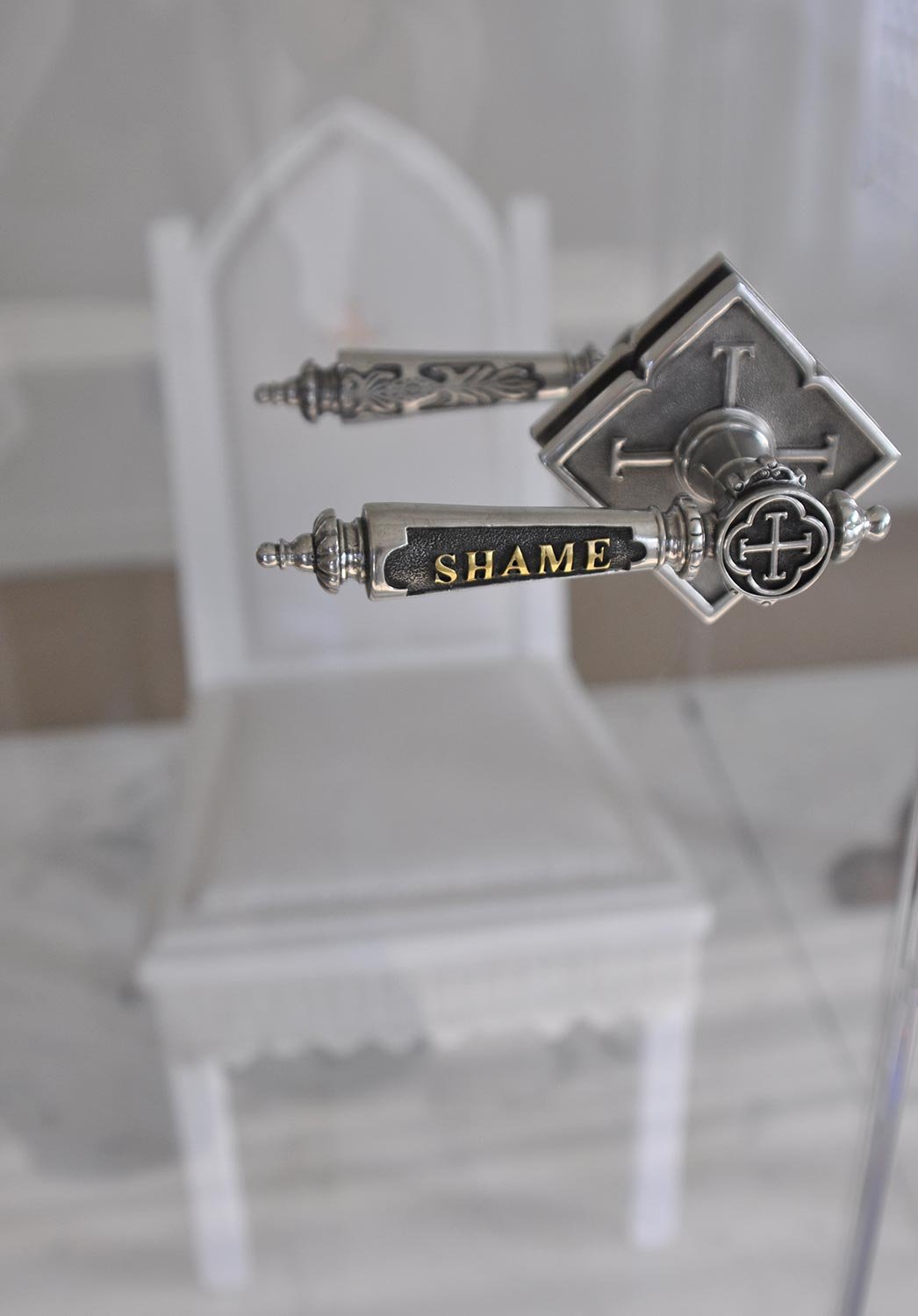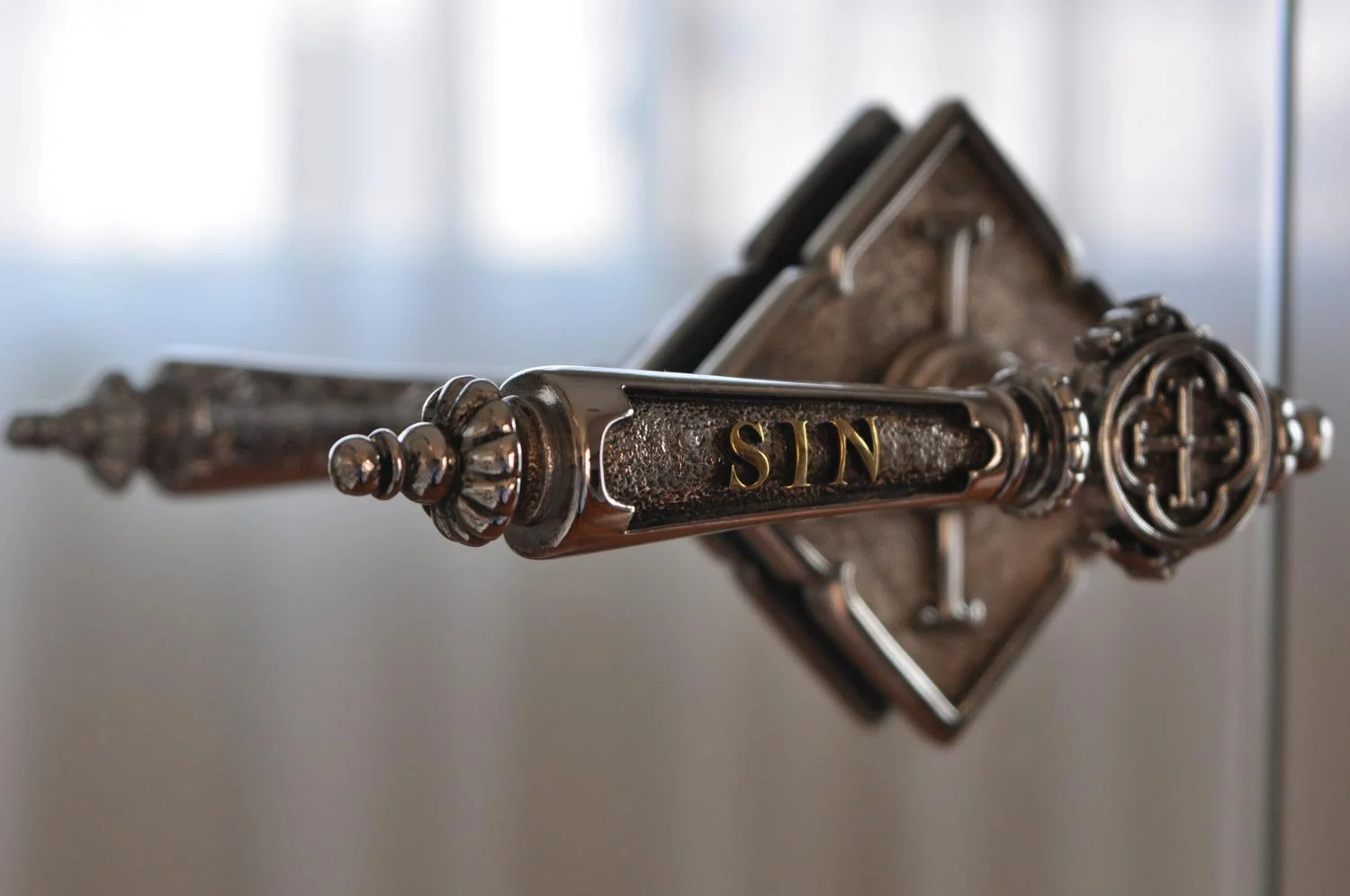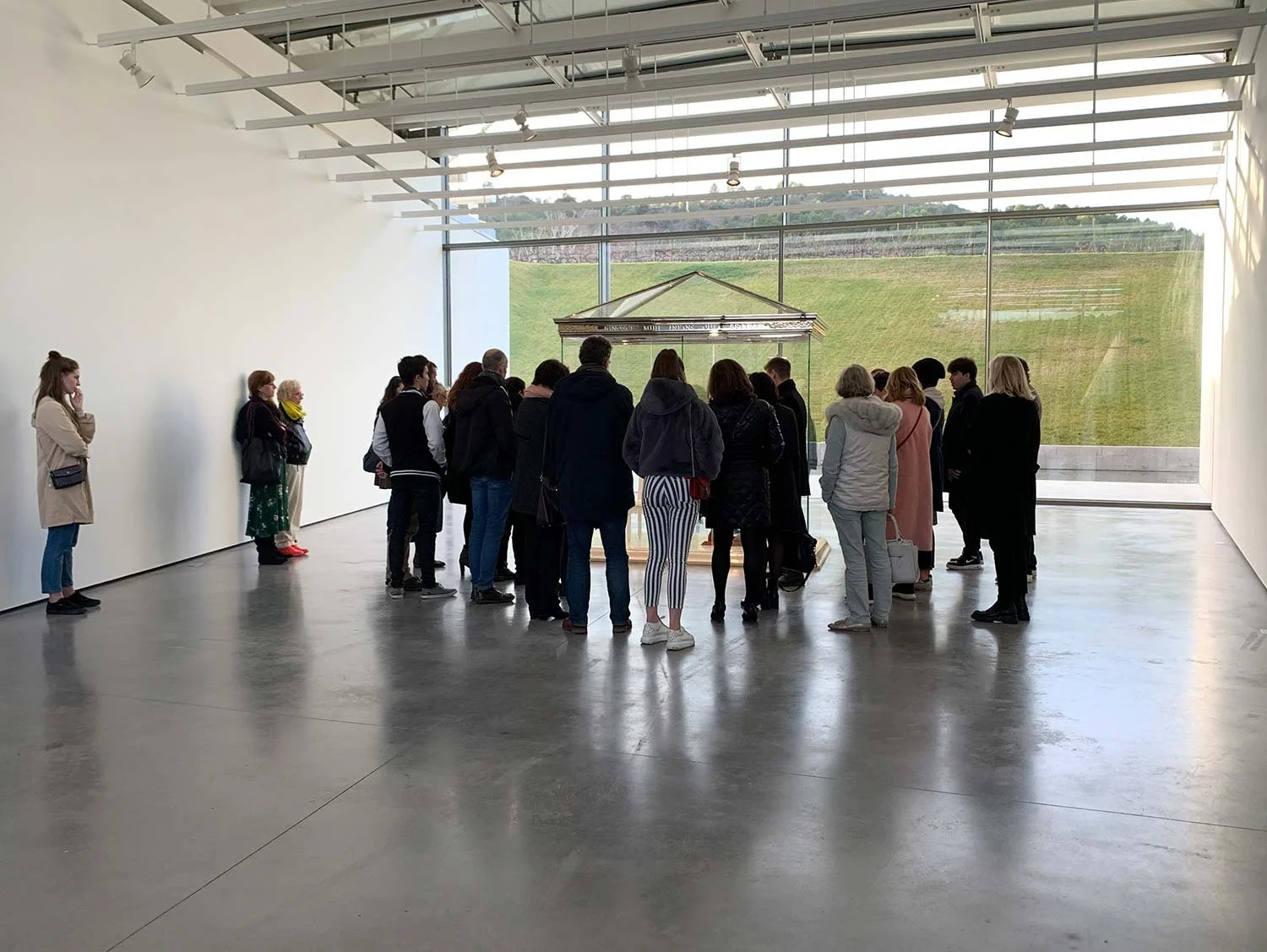Writings About Confess
Survivors Testimonials
Testimony by Phil Saviano
Silence, Guilt, Shame. These are the traits that have linked child clergy abuse victims in their web of betrayal. In Trina McKillen’s “Confess”, she has, with determination and courage, managed to turn anguish into art. Look closely and you will find all the elements of the abuse portrayed here. “Shame” reads the word on the door handle to the confessional. The purity and fragility of childhood—you’ll see that in the snow- white chair with its delicate, lace edging.
The first time I saw Ms. McKillen’s confessional, at her studio in Santa Monica, California, I was struck by the reversal of roles in her portrayal of the sacrament. It was a startling twist in just who was seeking forgiveness and who was doling out the penance. It is an inspired viewpoint—the sinful priest confessing to the innocent child; the sharp nails of the kneeler giving a hint of the priest’s penance to come.
Suddenly, I was flooded by memories of my own confessions, when, as a 12-year-old, I had to grapple with the fact that my abuser was also my confessor. Were my experiences a sin? If so, then, which of us two was the sinner? Was a confrontation in the confessional the only way to cleanse my soul?
Then, with my thoughts pulled securely back to the present, I moved away from her structure. I stepped to the wall of Trina’s studio to see the broad perspective. The confessional’s spotless, gleaming glass case seemed like a giant shadowbox, bathed in divine light entering from all directions. So incredibly transparent! Yes, there was Betrayal, yes there was Shame, but all of it was housed in a dome of Transparency.
That’s why this exhibition is so timely. We live in an age when clergy abuse survivors around the world are finding their voices. They are pulling themselves free of guilt and shame, breaking their silence, and bravely calling for transparency about their childhood experiences.
That transparency, of course, is also the path to putting a stop to this abuse. It is what all of us survivors are yearning for, yet it is what the Vatican seems so unwilling to embrace. Instead of transparency, they choose silence, obfuscation, denial. How can church leaders expect forgiveness when they persistently reject our calls to confess?”
Phil Saviano and Terry McKiernan visiting Trina’s studio in Santa Monica, just before “Spotlight" won the academy award for Best Picture 2016
Phil Saviano, June 23, 1952 – November 28, 2021
Phil Saviano was a Boston resident and internationally -recognized activist and advocate for victims of Catholic clergy sex abuse. Mr. Saviano was ahead of the curve in bringing this issue to public attention. He revealed his own abuse in a front-page Boston Globe story late in 1992. In 1996, he settled a civil suit against the Catholic Diocese of Worcester, MA, but refused to agree to any terms of confidentiality.
In 1997, capitalizing on his freedom to speak, Phil Saviano founded the New England Chapter of SNAP (Survivors’ Network of those Abused by Priests), providing a discrete environment where other survivors could meet for support and camaraderie. In late 2001, he worked closely with the Boston Globe’s Spotlight Team in their expose of the long-standing secretive world of clergy abuse in Boston. In the Academy-Award-Winning film, “ Spotlight,” he is portrayed as the whistle-blower whose input was crucial to the Globe’s investigation.
“Confess” offers me hope
Testimony by David Nolan
An unknown number of people worldwide have suffered as a result of Catholic clergy sexual abuse. The damage began when the crimes were committed against children. That damage was compounded over decades when those crimes were concealed and denied. People who were victimized were isolated in shame. The ripple effect of this damage continues to spread through generations.
I am a survivor of clergy sexual abuse. I have sought and received the enduring help and support from many people and have been privileged to be a companion to survivors and others affected on their trek through ongoing pain.
“The Children” captures the true spirit of the innocent and unconditional trust of children that were put in harm’s way.
“Bless Me Child For I Have Sinned” confronts us with the power and responsibility that was entrusted to the Catholic Church. This trust was the weapon which some clergy used to fracture the souls of the most vulnerable. The leadership failed to protect our children. The “Stations of Hope” gently dresses the wounds that many people have suffered and offers us the hope of light from this enduring darkness.
Trina has transformed this scourge into an invitation to heal while respectfully memorializing the pain and suffering of all people affected. “Confess” invites and challenges the current and future leadership of the Church to honestly and openly initiate a meaningful process of truth and reconciliation. “Confess” is a universal invitation to heal and it offers me hope.
"Stations of Hope" – Renzo Piano Pavilion at Château La Coste, Provence, France. Photo: Wearecontents
Testimony by Walter W. Watson, MD
History can quickly be forgotten and/or distorted, which is why monuments and memorials are crucial reminders.
Trina McKillen’s installation, “Confess”, plays a vital role in the arc of my life, as I fled Louisiana as one of hundreds of survivors of the heinous crimes of the monstrous Fr. Gilbert Gauthe and his brother, Richard Gauthe. The 1985 news reports uncovering these crimes were soon forgotten. In 2002, the crimes of the Catholic Church in Boston, and Cardinal Law’s soft landing, became the spoken landmark for the start of the abuse crisis in the U.S., as highlighted in the 2015 film, “Spotlight.”
“Confess” offers a profound work that calls upon the central message of the Catholic Church, which is Reconciliation. “Confess” turns around the blame child victims carry, and demands the confession of abusive priests. Reconciliation embodies the elements of confession, penance and forgiveness.
In “Confess”, transparency and penance are starkly called upon. Transparency, vital to any real confession, and penance, essential to any complete Reconciliation, have been wholly absent on every level within the worldwide organization of the Catholic Church regarding culpability in the abuse of children and the systemic cover-up of the crimes at every level of the Catholic Church.
The sins of the perpetrators of the horrific crimes of sexual abuse of children, and the collective sins of the protectors and enablers of the abusers that are structured into the hierarchy of the church are called upon in “Confess” to enter into reconciliation and transparency as never before. The installation of “Confess” at Château La Coste arrives when growing calls for transparency and independent investigation regarding the crimes and cover-ups of the Catholic Church are being made worldwide.
Now, we appreciate “Confess”, a much-needed and monumental piece. It is respectful of the place of the Sacrament of Reconciliation within the Catholic Church. It reflects a real understanding of confession that we have not yet seen from the Catholic Church. The hope is that this installation will promote communication, a vindication, a search for therapy and healing and a source of hope for survivors and their families.
"Bless Me Child For I Have Sinned" – Renzo Piano Pavilion at Château La Coste





